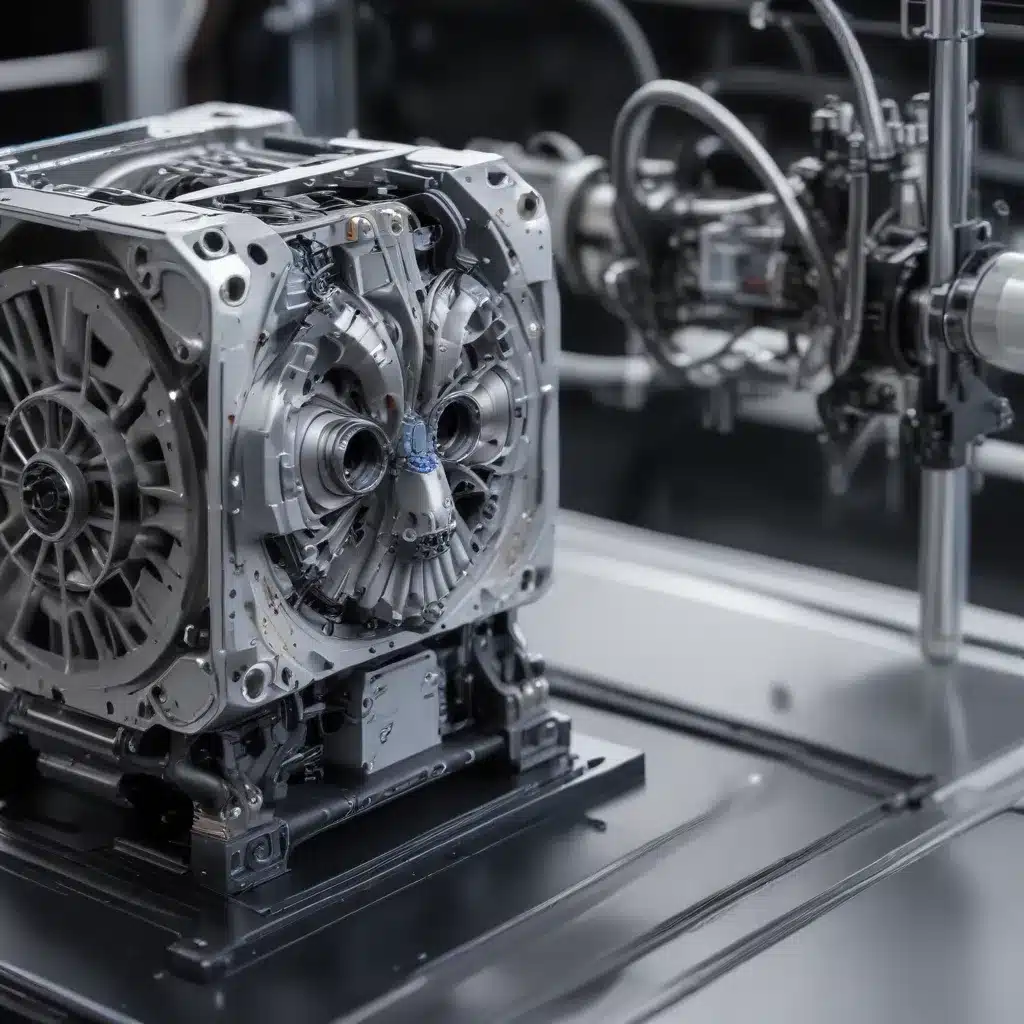
Unlocking the Potential of Digital Twins in Additive Manufacturing
Additive manufacturing (AM), also known as 3D printing, has revolutionized the way we design, prototype, and produce parts across a wide range of industries. However, the complexity of AM processes, particularly Laser Powder Bed Fusion (L-PBF), poses significant challenges in achieving consistent, high-quality outcomes. This is where the power of digital twins (DTs) comes into play, offering a transformative approach to optimizing and controlling AM processes.
A digital twin is a virtual representation of a physical system that can accurately mimic its behavior, predict its future states, and guide its optimization. In the context of L-PBF-based metal AM, a DT can predict the current and future states of the melt pool, correlate them to the formation of defects, and then leverage this information to adjust the laser parameters and minimize defects in real-time.
Introducing a Deep Neural Operator Enabled DT Framework
In this article, we explore a groundbreaking DT framework that harnesses the power of deep learning and physics-based modeling to enable closed-loop feedback control for L-PBF processes. This framework, developed by a team of researchers from leading institutions, including Global Engineering and Materials, The Pennsylvania State University, Virginia Tech, and Lehigh University, represents a significant advancement in the field of digital twins for additive manufacturing.
At the heart of this DT framework is the Fourier Neural Operator (FNO), an efficient and accurate machine learning-based surrogate model that can approximate the complex melt pool solution field. By coupling the FNO with a physics-based computational model and a physics-based procedure to extract defect-related information, this DT can accurately predict the current and future states of the melt pool, as well as the resulting defects, such as surface roughness.
Integrating Physics-Based and Data-Driven Modeling
The DT framework proposed in this article seamlessly integrates physics-based and data-driven modeling approaches to create a comprehensive virtual representation of the L-PBF process. Here’s a closer look at the key components:
-
Physics-Based Computational Model: The team developed a physics-based computational model that accurately represents the melt pool states, capturing the complex thermal and fluid dynamics involved in the L-PBF process. This model serves as the foundation for the DT, providing a high-fidelity representation of the physical system.
-
Fourier Neural Operator (FNO) Surrogate Model: To overcome the computational expense of the physics-based model, the researchers employed the FNO, a deep learning-based surrogate model that can efficiently approximate the melt pool solution field. By training the FNO on the data generated by the physics-based model, the DT can rapidly predict the melt pool states without sacrificing accuracy.
-
Physics-Based Defect Extraction: The team devised a physics-based procedure to extract information from the computed melt pool simulation that can be directly correlated to defect quantities of interest, such as surface roughness. This seamless integration of physics-based and data-driven approaches ensures that the DT can accurately predict and optimize for specific defect metrics.
Optimizing for High-Quality Manufacturing
The DT framework’s true power lies in its ability to optimize the L-PBF process for high-quality manufacturing. By leveraging the predictive capabilities of the FNO-based surrogate model, the DT can rapidly explore the process parameter space and identify the optimal laser input settings to minimize defects, such as surface roughness.
The optimization workflow utilizes an iterative process, where the DT continuously refines the laser parameters to achieve the desired outcomes. Additionally, the DT framework incorporates a physics-based regularization term to ensure that the optimized parameters result in a controlled peak temperature, further enhancing the quality of the final part.
Adaptive Learning and Uncertainty Quantification
The DT framework’s adaptability is another key feature that sets it apart. The DT is designed to evolve alongside the physical twin, incorporating real-time sensor data and adjusting its internal parameters to match the actual process conditions. For instance, the DT can update the probabilistic distribution of laser absorptivity to align with the thermal image data captured during the manufacturing process, ensuring that the virtual and physical systems remain synchronized.
Moreover, the DT framework adopts a probabilistic approach to uncertainty quantification, accounting for the inherent variability in the AM process. This allows the DT to provide not only point estimates of the predicted outcomes, but also their associated uncertainty bounds, enabling a more comprehensive understanding of the process and informed decision-making.
Demonstrating the DT’s Capabilities
To validate the effectiveness of the DT framework, the researchers conducted a series of experiments and virtual demonstrations. They fabricated cone-shaped specimens using an EOS M280 L-PBF system, collecting in-situ thermal data and cross-sectional analyses to characterize the melt pool and surface roughness characteristics.
The DT was then used to guide the laser parameter optimization, demonstrating its ability to reduce surface roughness by up to 25% compared to the baseline case without DT control. Additionally, the DT’s uncertainty quantification capabilities allowed for a probabilistic assessment of the controlled peak temperature and the resulting surface roughness, providing valuable insights into the process variability.
Unlocking the Future of Additive Manufacturing
The DT framework presented in this article represents a significant leap forward in the quest for high-quality, closed-loop control of L-PBF-based metal AM processes. By seamlessly integrating physics-based modeling, data-driven surrogate modeling, and optimization techniques, this DT can accurately predict the melt pool states, correlate them to defect formation, and guide the laser parameter optimization to minimize defects and improve manufacturing outcomes.
As the additive manufacturing industry continues to evolve, the adoption of digital twins like the one described in this article will be instrumental in unlocking the full potential of these transformative technologies. By bridging the gap between the virtual and physical realms, digital twins will empower manufacturers to achieve unprecedented levels of precision, consistency, and efficiency in their additive manufacturing processes.
To learn more about the latest advancements in air-cooled heat exchanger technology and their applications, be sure to explore the comprehensive resources available on Air Cooled Heat Exchangers.

